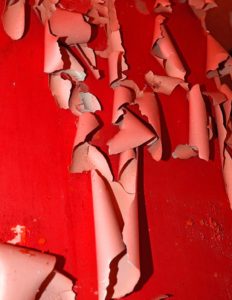Many characteristics of powder coat make it a superior alternative to wet spray paint, including:
Dry film thickness – Powder coat is 4 to 10 times thicker than traditional liquid spray paint, making powder coat a more durable option. Wet paints are applied in thicknesses of 0.5 to 1 mil (a mil is one one-thousandths of an inch, or 0.001-inch). Powder coat is applied in thicknesses of 2 to 6 mils for decorative finishes or 6 to 10 mils (and thicker) for functional finishes.
Hardness – Decorative powder coat is physically harder than wet paint. This property translates into significantly greater scratch and chip resistance, and thus generally better durability.
Adhesion – Powder coat adheres to the substrate better than spray paint. Partially a function of the sophisticated pretreatment process that all parts go through prior to coating, the excellent adhesion contributes to chip resistance as well as corrosion resistance.
Flexibility – Powder coat can withstand bending without cracking or flaking. Powder manufacturers publish flexibility test results that demonstrate between 100-800% elongations before failing.
Corrosion resistance – Proper pretreatment and powder coat finish selection results in surfaces that are far more resistant to corrosion than those treated with traditional spray paint. Published salt spray test results show decorative powder coat can last 1000 hours and longer without showing signs of failure, and functional coatings are even more corrosion resistant. That’s not to say powder coat cannot be scratched, because if you work hard enough you can scratch anything. But with traditional spray paint the rust that develops at a scratch exposed to the elements will spread and lift the surrounding paint until the finish is ruined. With an appropriate powder coat finish, a deep scratch left in the elements long enough to ruin spray paint will just be a rusty scratch.
Environmental impact – Powder coat is an environmentally friendly process. The powder is not a significant health, fire, or environmental hazard. , and functional coatings are even more corrosion resistant.Conversely, wet paint is flammable, carcinogenic, and full of volatile organic compounds (VOCs). And because powder coat is applied in dry form electrostatically, transfer efficiencies over 90% can be achieved to minimize waste. In special cases, powder that doesn’t end up on the parts can even be reclaimed and reused. By comparison, wet paint transfer efficiencies can easily drop below 50%, and overshoot goes right into the environment.


